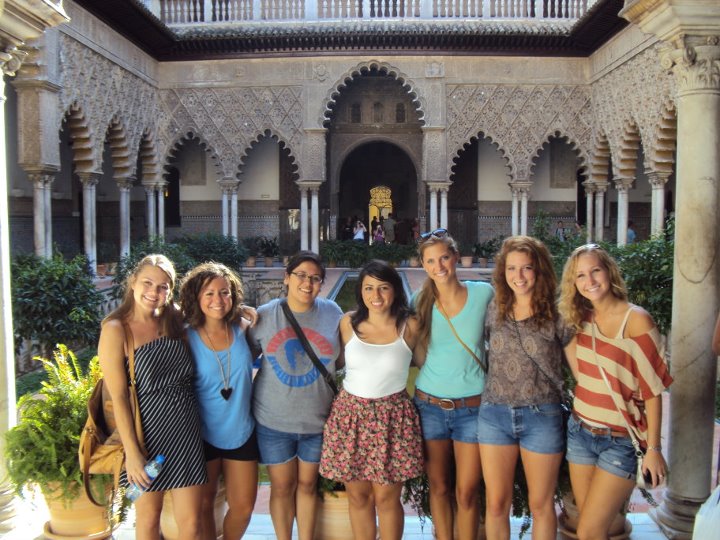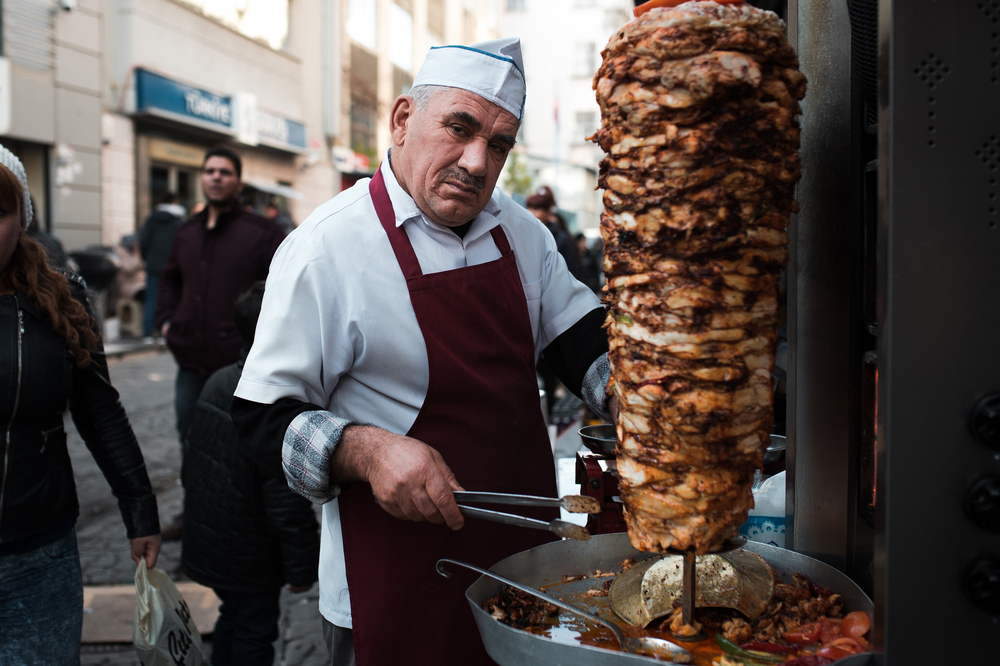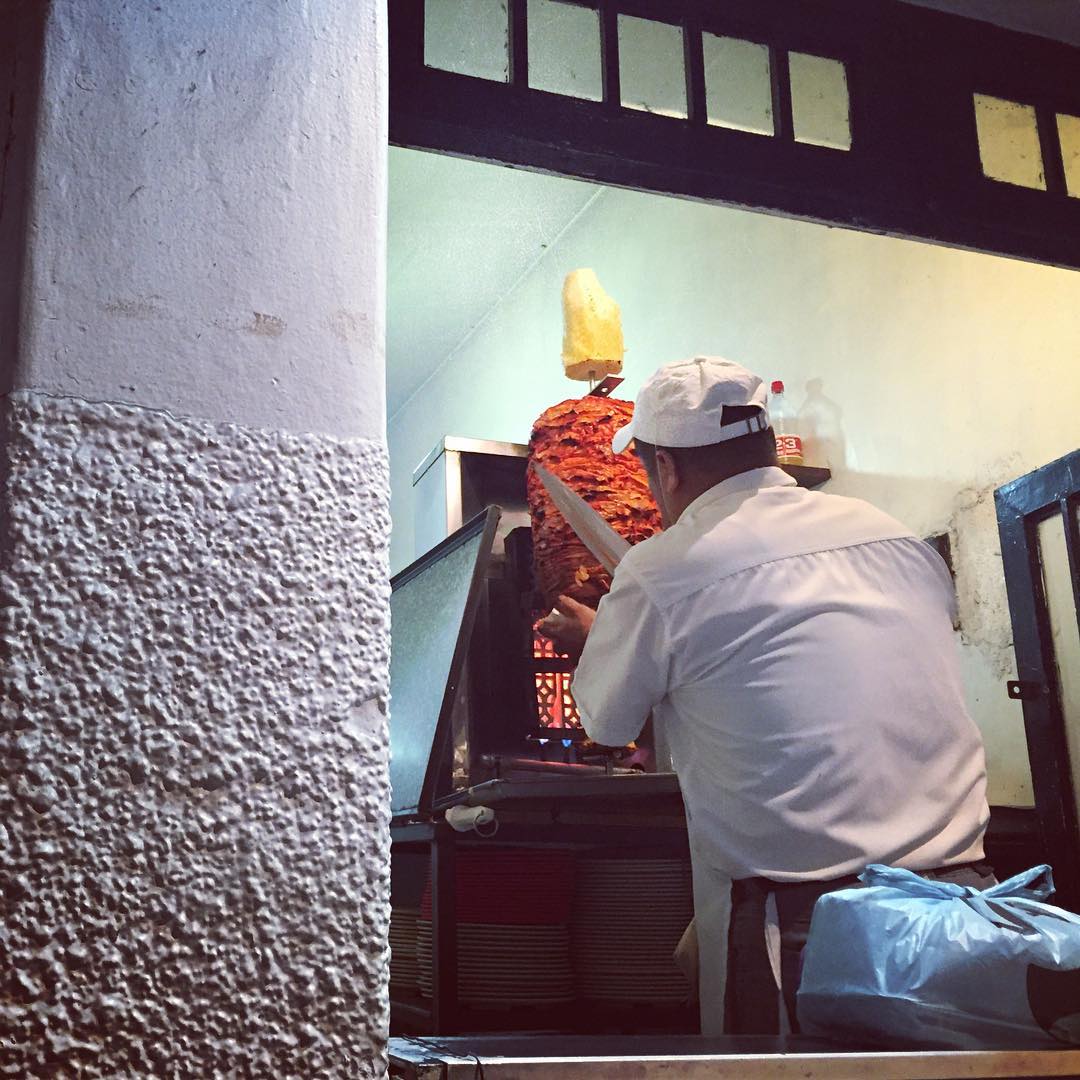Hello, I’m back with an all new Taco Tuesday! This is a column all about tacos, their history and origins, how they’re evolving everyday and my love for their tasty goodness.
When I was a junior in college, I studied abroad in Sevilla, the capital and largest city of Andalusia in southern Spain. I choose to study abroad in Sevilla for a variety of reasons: I understand and can speak Spanish (I’m better at Spanglish), I wanted to be in a specific magazine journalism program that was only offered in Sevilla, it was within my tuition budget, and also because Sevilla seemed like the most fascinating city in Spain with a rich history influenced by the Christians, Jews and Muslims who lived and worked alongside each other in medieval times.
I was mostly interested in Sevilla’s history under Muslim rule when it was part of Al-Andalus, which spanned the 8th to 15th centuries and yielded such huge, beautiful structures and architecture that you can find in the city today like the Alcázar (a royal palace that use to be a fort), the Giralda (originally built as a minaret) and the Torre del Oro (originally built as a military watchtower). Granted these structures and some of the architecture found within them were changed and/or copied by Christian kings later on (which is called mudéjar style art/architecture) but the Arabs’ influence is undeniably found throughout the city.

My study abroad cohort at the Alcázar. You can see examples of mudéjar style architecture in the background, which was influenced by the North African people who conquered the Iberian Peninsula.
I had a grand time frolicking through the city as a 20-year-old and thoroughly enjoyed Sevilla’s nightlife. I did what all American students do while studying abroad and I went out to the discotecas to party with my classmates ’til the wee hours of the morning and was well-acquainted with the popular bars in my neighborhood. The only problem with drinking and partying late into the night is that there weren’t any 24/7 fast food restaurants open in Sevilla to save my drunk ass. It’s fine, my friends and I survived because there was this tiny little place near my friends’ apartment that sold doner kebabs till 1 a.m. We would stop by before getting our night started or leave the club/bar early just to eat a delicious kebab before the shop closed.
Doner kebabs, which originate from Turkey, are ubiquitous in Spain and are usually sold as pita wraps filled with beef, lamb or chicken that’s been cooked on a vertical rotisserie and then dressed with tomato, lettuce and various types of sauces. At that point in my life, I had never eaten a doner kebab, shawarma, gyro or anything that resembled anything like them. I grew up in the Valley and wasn’t really exposed to cuisines from different cultures. So when I saw this seasoned stack of meat slowly turning on this vertical spit while a dude was shaving off the cooked meat, I automatically thought — wow, what are al pastor tacos doing here?!
Of course there weren’t any al pastor tacos in sight. I was confused and astonished because here I was half a world away and witnessing something so familiar and centric to taquerias found back home and Mexico. It wasn’t till a couple years ago that I found out how these two similar street eats from different cultures were connected.

Man cooking shawarma in Istanbul, Turkey. via shutterstock.com
Tacos al pastor are made from strips of adobo-seasoned pork then stacked onto a long spit called a trompo, which means “spinning top” in Spanish, because the shape of the meat is similar — narrow at the bottom, wide at the top. And usually at the top of the spit is a pineapple, while the stack of meat sits on an onion. As the pork turns on the vertical rotisserie, fat and juices drip down the skewer as the outside layer of the pork becomes crisp from the heat. A taquero will then shave off the crispy outer layer straight onto tortillas and then top it off with some of the pineapple from the top of the spit along with onions, cilantro and a tangy green salsa.
Tacos al pastor are intrinsic to Mexico’s taco scene and what we think of when talking about street tacos. But it turns out tacos al pastor only date back to the 1960s in Mexico and actually have a direct connection to the Middle East, specifically from Lebanese immigrants who moved to Mexico in the early 1900s, and brought along with them their shawarma recipes.

Tacos al pastor served window-side in Oaxaca, Mexico. I gobbled these tacos up.
Shawarma, like doner kebab, originates from the Ottoman Empire and is a pita filled with beef or lamb that was cooked on a vertical spit. The origin of the word shawarma comes from the Turkish word çevirme, which means “turning.” Between the 19th and 20th centuries, about 36,000 people under Ottoman rule, mostly from modern-day Lebanon, came to Mexico to look for economic opportunity, to avoid being enlisted in the army and to escape violence from their crumbling empire.
When they arrived in Mexico, they also brought their food, and by the 1930s Middle Eastern immigrants opened restaurants selling shawarma and calling them tacos árabe — Arab tacos. Tacos árabe were direct interpretations of shawarma — they used pan árabe, (pita) but instead of using beef or lamb to fill the pita, they used cumin-and-orgeno-marinated pork. Many of the migrants settled in Puebla, which is a couple of hours away from Mexico City, where you can still find tacos arabes today.
A few decades later, tacos árabes evolved into what we now know as tacos al pastor. In the 1960s, there was a culinary boom in Mexico City, where there was a lot of experimentation and trendy restaurants opening up. According to Jeffrey Pilcher, food historian and author of Planet Taco, during this time, Mexican-born children of Lebanese migrants started to open up their own restaurants and created “a kind of hybrid cuisine.” “They take the technology that they grew up with in these Lebanese restaurants, the vertical rotisserie — but instead of using lamb, they use pork,” Pilcher tells Public Radio International. “They marinate it in a red chili sauce, which gives it that distinctive color, and they cook these up and serve them and call them tacos al pastor.” The term “al pastor” which means “in the style of the shepherd” is a nod to the original dish made with lamb.
The only thing left to explain is how the pineapple came along in the picture, but that fact remains unknown. My theory is that pineapple is associated with Hawaii, where they traditionally roast entire pigs on spits, so Mexicans made that connection somehow and thought pork and pineapple would be tasty. However it came to be, I’m glad it did, because tacos al pastor wouldn’t be complete without the piña on top.
For me, it was far more interesting to learn tacos al pastor are still a fairly recent invention because it feels so ingrained in Mexican culture. It’s amazing how Middle Eastern immigrants introduced a totally new concept of food to another country which greatly impacted their menu and created a staple for years to come. The origins of tacos al pastor are a testament to how easily adaptable tacos can be and when they collide with another culture, it can be a recipe for flavorful perfection.

wait omg yvonne doner kebabs were my drunk food in berlin & I had the same al pastor connected thought when I first encountered them! this information is so highly satisfying to know, bless you for this important continued research
An entire article dedicated to the Döner!
This couldn’t be dearer to my heart.
Berlin sometimes claims the invention of the Döner Kebap, which is probably due to the fact that you can find a döner shop every few hundred feet and discussion of the best places is common.
Döner is made from veal,here,traditionally (also, because halal and cheaper than lamb) but chicken döner has found its niche since the British had a Creutzfeldt Jacob contamination in their beef supply a few years back and nobody was up for anything beef for a while.
However, there’s usually a strict distinction between Döner, which is Turkish and Schawarma which is Lebanese and made from Chicken.
Without the Lebanese and Turkish Döner and schawarma places in my neighborhoods, I probably would have starved by now.
Making it my mission to find a Taco al Pastor in Berlin,now!
Thanks for this article!
Lebanese shawarma can be made from either meat or chicken.
In Lebanon, at least.
Not just Lebanon.
There was Greek-Lebanese place where I live (Louisiana) that used to do lamb shawarma and not just chicken shawrma.
I have no earthly idea why they stopped doing lamb too, because it was heavenly. Lamb gyro has nothing on lamb shawrma.
I miss it so, but at least I can drown my sorrows in Lebanese tea and chicken shawrma. :)
Lamb here is beyond expensive and beef, struggles with popularity issues, so in Berlin, it’s almost exclusively chicken.
The idea of a lamb shawarma sounds heavenly, though!
Lamb isn’t the cheapest meat, but here in the US it might not be as well fed on nice grass or some European standard of lamb product so in price ratio etc could be why it isn’t super expensive. But free range or wild bison meat, that is beyond expensive here because legal permission to hunt them and procure their meat for sale is a tightly controlled thing.
But eh from my experience grilling and what I know of beef I do not think it would do well with the cooking process of shawarma. It probably gets too tough.
It’s so fucking is heavenly.
You don’t even need all the fixings or the pita bread. Can just like put a piece lamb shawarma meat in your mouth like it’s candy and just…dude
This was so interesting and made me soo hungry!
Even though I just ate dinner. Gazpacho was really satisfying until I thought about tacos…
What sort of sauces go on the döner kebabs where you all have had them (Berlin, Sevilla, other)? I’m curious if that varies by country!
I rarely eat them these days, but used to always get harissa because spicy dishes are relatively limited in France.
My favorite kebab ever was from a Turkish restaurant/pizza place near the uni I went to on exchange in le Mans, France. They used homemade fluffy bread instead of pitas and they were amazing.
It was also pretty much the only restaurant near uni and there were many transport strikes that year/dorm kitchens were a disaster so I went there a lot (though more often for a meatball dish they did than a kebab) and we loved the couple who owned it so much we took a picture with them before leaving and left them a copy which they would pull out and show to foreign students for the next 2 years (before they sold the place) to ask if they knew us. <3
This interesting to read. I would just like to add that kebob comes from the middle Persian word for frying/skewering and is still used today.
This article was super interesting but real talk I had a mini heart attack when I thought this meant that today WAS Tuesday.
PLZ DON’T TAKE MY FRIDAY AWAY
I am Lebanese and this made me happy :)
Great things come from different cultures mingling
My Arab teacher, who is from Egypt always gets very excited when he talks about the spectacular food from Lebanon! I,personally, am rather grateful for the Lebanese and Turkish immigrants to Germany, they saved us from an endless array of “Wurst”.
Just like the Mexicans thankfully saved the Americans from having everything deep fried and/or slapped between two mushy buns;-D
Oh, I’m so glad that Taco Tuesday (or Friday) articles are back (even though it makes my dinner look sad)! This connection is fascinating, too.
Well, now I want a taco.
This was super interesting, fascinating to hear how these tasty things interconnect, also to learn a little history about Seville, a place I’ve always wanted to visit, but never made it to. We mostly have Doner Kebabs here in England, rather than shawarma. They are a standard post drinking wee hours snack/meal. We Brits, as ever, have bastardised this dish – so you can buy Doner meat pizza over here…it makes so much sense at 3am after a few adult beverages.
This was great! Thank you Yvonne, taco Tuesday always make my day, regardless of what day of the week it is. Probably weekdays were invented by the patriarchy so I think publishing this on a Friday is an inherently revolutionary act.
This article was super fascinating however genuine talk I had a scaled down heart assault when I thought this implied today WAS Tuesday.Because Just /think about bar accessories settlement in Own bar
I love this story.
It reminds me of another cross-cultural taco origin story about the battered fish tacos of Baja, which we informed by Japanese fishermen’s tempura. I am pretty sure this was in Saveur magazine, but I can’t find a good link to share the original article.
Oh, or the so-called Sonoran hot dog from Tucson’s El Guero Canelo…